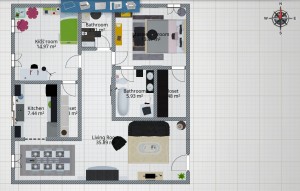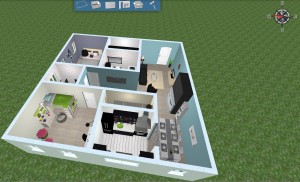Okay, time for something interesting.
Interviews and surveys are always interesting due to several reasons.
Firstly, most people are biased, and if nothing is done to tell them apart, we’ll get nothing but counteracting opinions, which is always bad.
Then, people tend to make their answers looks good or more towards the good part, especially if limited time is given, or the people doing the interview has a promised return but the interview/survey itself is not as interesting.
Because of those factors, an interview or survey should be crafted in a way that it spark the interviewer’s interest too.
Earlier, we already talked about human’s attention, or the lack thereof. While giving them prizes for completing surveys is a valid way of doing things, it would often leads to a heavily biased answer just for the quick prize.
Another valid way of doing things is to only cater to the people who would properly do the survey in the first place. Namely, there are lots of gamers that would agree to left down their impressions if they know their input would ultimately make the game a better one. This would at least get rid of the second possible flaw.
Then, it’s just the art of asking questions, or in other words, conduct a evaluation.
Talking about why, what, where and when
Why?
Normally, we need to know if our game matches the player’s requirements, and more importantly, if they like it and why.
For example (and I’ll use this game of mine a lot in this blog article), my own PHP Web Browser game, Battle Royale, is liked by players because it’s simple text-based MUD. It’s portable, meaning as long as there are internet access, one can play and drop out at any time. There are very few thing to download due to most of the game is text-based. Plus, the game is very fast-paced, which in turn means less time investments to play.
What?
We usually use a prototype of the game we’re making. In Battle Royale’s case, since the game is constantly updating anyways, we just use a production version of the game. The survey is located at the page bottom, any player can do it when they got time.
Where?
The location of the evaluation is important for some projects due to the evaluation needing more data. I could see the spooky house project being one of them since we’re working with devices and such. For Battle Royale, its MMORPG roots allows the evaluation be placed anywhere, due to we don’t need a lot of information and most of the information we need can be gathered from online means.
When?
It’s usually not a good idea to set evaluation sessions within the gameplay process because that would broke the immersion of the player. Personally, I’m a little uneasy with placing the evaluation before the game session either, unless it’s for prediction purposes (e.g. What do you think this game may about, etc.) since I found the idea of waiting to play a game – need to fill out something to play a game – seems counterproductive. Then again, in Battle Royale’s case, the survey link is always at the bottom of the page and one can access it at any time. From my observation however, most of the time it’s accessed after a player died in the round and is waiting for the next one to start. So my opinion isn’t alone, it seems.
In Battle Royale’s case, the data gathered from evaluation directly influences the next updates. From the replies, we can understand what our players want, and update the game to include more element they want. This also contributes to the game’s player groups since in their eyes, we as game developers actually hear what the players are saying, and is willing to change up our games for them. This alone earn us a lot of returning players.
However, there are more in it than just asking Why, What, Where and When. The last W, Who, is also an important matter.
As we discussed two weeks ago, there are lots of types of players, and each type is likely has their own requirements. It’s nearly impossible to produce a game that make every single player group happy. In Battle Royale’s case, what I did is before the actual survey, additional questions are added that seems random to the players but is actually testing their play style of the game. The results are then grouped into their respective play styles, with each play style with a different set of data. While this seems to be more work as I’m compiling the data multiple times with this approach. It proves to be useful in the long run as we can cater the game better to the type of players who enjoy playing our game.
In case this blog article is too egotistic – Of course I knew a lot of different other games that makes use of a good evaluation system. However, some of them are too complex while Battle Royale’s player group and developers are much closer. In larger games with more complex evaluation methods, the observation of evaluation result versus game changes usually takes longer time than intended. Recently as Battle Royale’s user group and servers growing, we too has this small problem of data coming in slower than we originally thought since we have more source of data but still the same resources to process them.
Well, this is for this week, for now.
Until next time…

